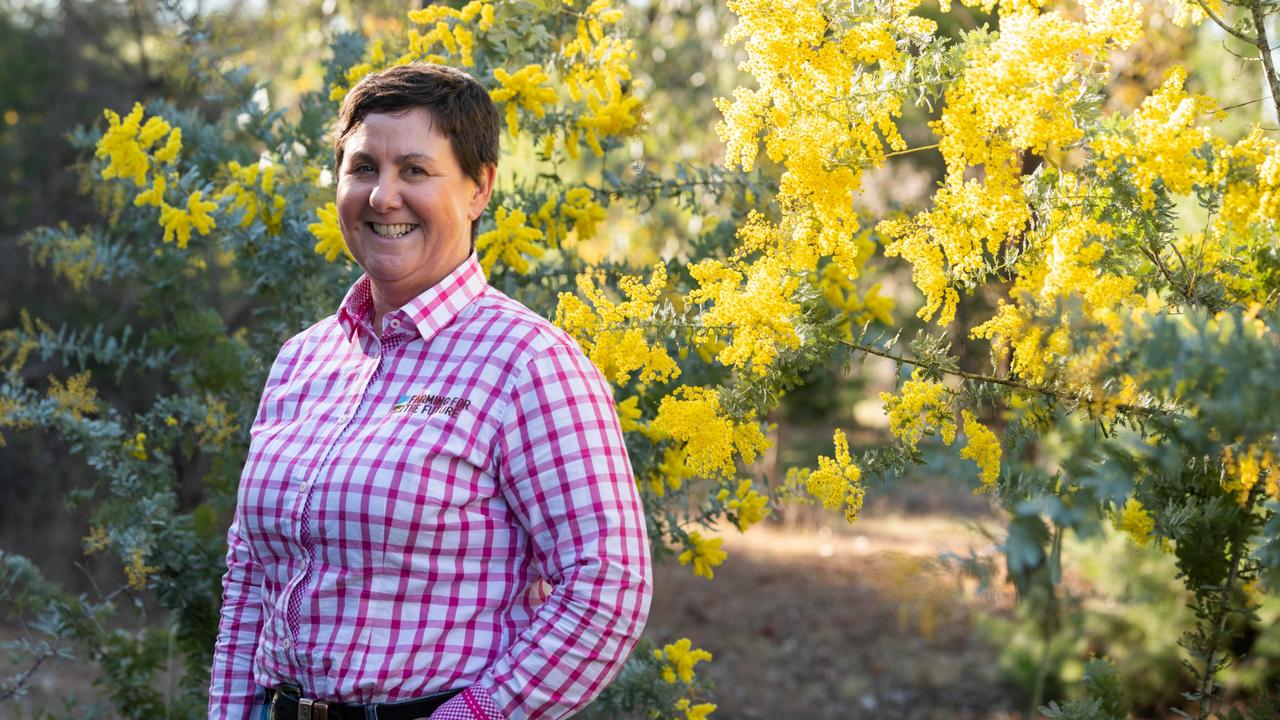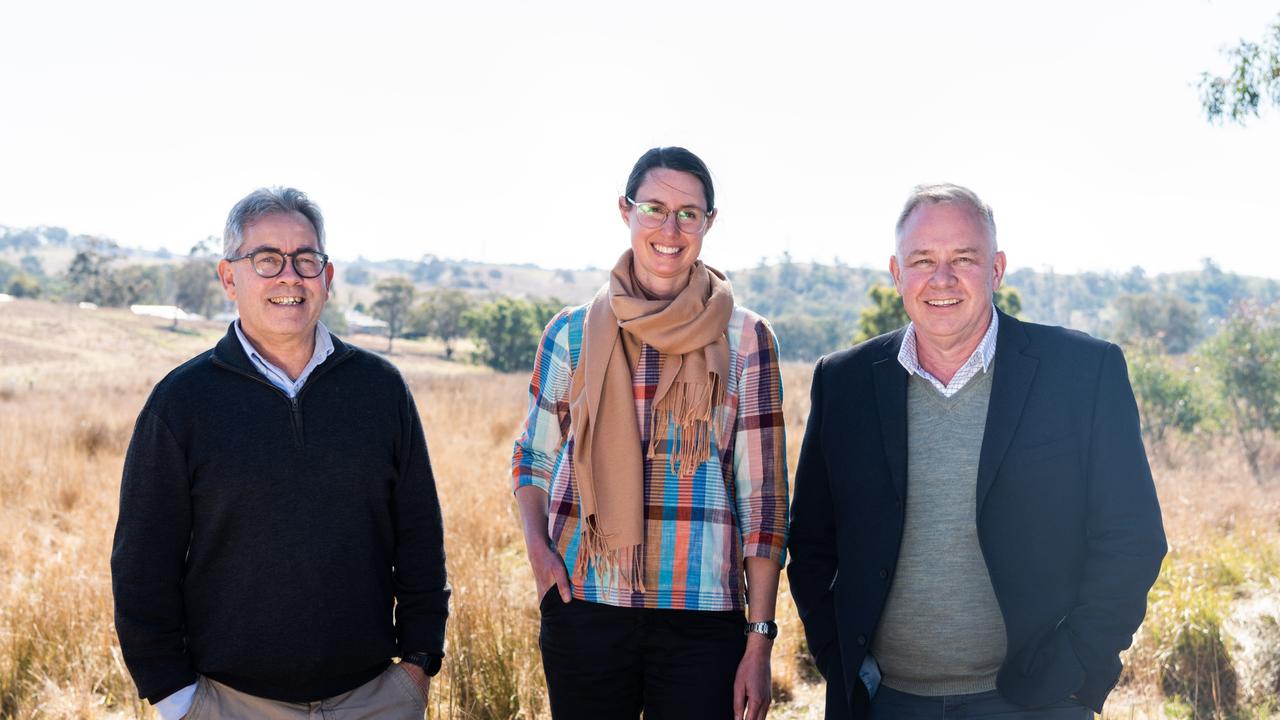Macdoch Foundation Farming for the Future: Natural capital’s link with business performance
Meet the farmers who are measuring whether money spent on ecological conservation can really deliver financial returns.

Norm Smith’s family has run Merinos on Glenwood for more than 130 years.
The 2800-hectare property at Wellington is in an agriculture-rich valley on the Central Western Slopes of NSW, where sheep, cattle, crops and vineyards stretch across rolling hills. The region is also home to grassy woodlands, an ecosystem that dominated the landscape pre-settlement but is increasingly under threat.
To manage a sheep enterprise on this land for more than a century, and keep native grasses and wildlife healthy while their flock thrives, the Smiths must be doing something right.
But in farming, numbers tell the true story. So Norm and wife Pip are excited to be part of a world-first research project that aims to quantify the relationship between farm business performance and “natural capital” – or a property’s ecological assets including soil, plants and wildlife.



They’re one of 130 enterprises taking part in the Farming for the Future study, established by philanthropic Macdoch Foundation and run by program director Dr Sue Ogilvy.
Ogilvy and her team hope the preliminary data, due to be revealed on September 13, will support their hypothesis that ecological improvements on a farm may directly affect an enterprise’s financial and production performance in a positive way.
“In simple terms, the way I would describe (the hypothesis) is that up to a certain point the farm business is getting significant free inputs from nature that are helping it to produce crops and livestock,” she says. “Beyond that point, the management is producing more public good than it is benefits to farmers.”

The Farming for the Future team initially came up with the term “opportunity zone” to describe the point where there’s positive returns to farmers associated with increase in natural capital. “When I spoke to GRDC (Grains Research and Development Corporation) about the project, they described it as the ‘double-dividend’ zone because there was a dividend to farmers and a dividend to society,” Ogilvy says.
“We thought that was really clever, so we pinched it.”
Ogilvy says the analysis may also reveal a “trade-off” zone, where further improvements to natural capital actually decrease business outcomes.
“Society is expecting and needing measured environmental performance from farmers,” she says. “If our research shows that is actually going to come at a cost to farmers, it gives us a much better understanding of how to compensate farmers appropriately and efficiently.”
To compile the research, agriculture consultants have collected financial, productivity and social data from farmers, while ecologists have measured canopy cover, vegetation diversity, bird and wildlife species in on-farm field visits.
The initial 130-farm sample includes livestock operations in NSW, Victoria, Tasmania and Western Australia, but it’s not big enough to extrapolate findings to all Australian farms. The next step – if funding can be secured – is scaling up to 400 farms and eventually to 1500, which would provide a robust data set.

On Glenwood, the Smiths’ sheep coexist with healthy woodland and that’s thanks in part to some radical changes Norm and Pip made 25 years ago that encouraged regeneration of native vegetation.
In 1998, the couple had taken the reins from Norm’s parents through a succession plan. “Farming, in particular Merino sheep, had just been through the reserve price crash. Prices for wool and prices for sheep weren’t great and there were a lot of financial pressures on us as a business, as well as having to look after our parents and a family succession process,” he says.
“That’s when we first looked at holistic management as being an alternative to how we were managing the farm.”
They wanted to strike a balance between caring for natural capital and running a profitable livestock enterprise. Holistic management, created by controversial Zimbabwean farmer Allan Savory, prioritises ground cover and maximises paddock rest by grazing animals in large mobs.
“Holistic management taught us, it’s not just about the sheep and the cattle and the farm. It’s about the people, about the water cycle, about the sunlight; it’s everything. And if something goes wrong (in one place) here, it effects everything,” Pip says. “It is all is so interconnected.”
Adopting the approach reduced their need for costly fertilisers and improved the soil’s water-holding capacity.
“If we manage this way, we’re actually increasing biomass, increasing ground cover, decreasing animal water run-off, increasing diversity of perennial plants, increasing the floor and fauna, the bird habitats … it’s all going in the right direction and the natural capital accounting will show that,” Norm says.

Not far away on Gillinghall at Spicers Creek, Angus Maurice and wife Lucy run a 2520-hectare mixed farm with Merino ewes, 700 hectares of crops and egg-laying Isa Browns, running about a quarter of the enterprise regeneratively. The property is also home to two creeks, multiple soil types, trees and ecosystems.
“It’s quite diverse right across the farm,” Maurice says. “Over the past 25 years we have developed plans to improve biodiversity. During this time we have developed an interest in landscape health, and how that fits with production and profitability. For us it’s very much about finding the right balance, and that’s what this project’s all about.”
Maurice says he has experienced the “trade-off” zone that Ogilvy describes. In the early 2000s, he invested “heavily” in improving his natural capital.
“There was a dividend to the environment. But that was taking new knowledge, and probably going a little bit too hard and just lacking a bit of experience,” he says.
FARM adviser Mark Gardner is part of the project team, and says its results could give clear financial justification for investment in ecological regeneration.
“Farmers have been making investment decisions (about natural capital improvements) without real clear evidence of the benefit,” Gardner says. “The thing that’s got the advisers fired up is that we can build natural capital on the production parts of farms.”

Farm business accountant Pete Debus is part of the data-collection team. He says the project could help better estimate land value, and its contribution to business success.
“We’re looking at a farm in terms of what we call the five Ps,” Debus says: people, property, profit, production systems and pecuniary (related to debt structures). “Coming from an accounting background, we’re pretty good at the profit side of things and production systems and we keep scores, if you like, on people and how they’re travelling.
“The property side has always been hard from our background. One of the things we’re excited about with Farming for the Future and natural capital is we’ve now got experts coming in giving us tools to look at the farm more holistically than we were looking at it previously.”
Ogilvy says the data will provide new tools for farmers, but also their advisers and supply chain partners.
“Farmers and their decisions are greatly influenced by banks and negotiations with supply chains,” Ogilvy says. “So we need to put those organisations in a position where they can provide an environment for farmers to make the best choices that can possibly be made so that we can assure food security, respond to and mitigate climate change and that we can have stable economic systems.”




